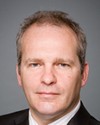Managing the recreational and commercial fisheries together, and figuring out how they connect, and what portion goes to which is a challenge. I would say it's been more of an issue on the west coast than on the east coast, generally. I would also say that we have more of a formal integration of our processes for providing advice to the minister and the department from stakeholders on the west coast than we do on the east coast. For salmon and other west coast species—but salmon in particular—we have an integrated harvest committee that has commercial, recreational, and aboriginal representation. We try to have those groups come together and sort out, at those tables, how we're going to manage the overall fishery issues about shares. But as you point out, other issues are addressed in those fora.
We tend not to have that on the east coast. On the east coast, there is a pretty well-established process for how we address Atlantic salmon. There is an established process for how we address striped bass, recently established because it has just come back, but we don't have those integrated harvest tables.
In terms of a framework, we do have a formal framework. We actually have an operational policy with respect to how we manage recreational fisheries. It is from 2001. It hasn't been refreshed for a while. I don't think some of the things we've talked about today are reflected in it, such as charter fisheries, derbies, and those types of things which are new, emerging, and certainly growing.
To be candid, I would say it is sometimes hit-and-miss in terms of how we address it on the east coast.
Monitoring is an issue. Whereas, on the west coast you have 300,000 recreational license holders, we're not getting 300,000 responses, nor are we seeking them. We have to be strategic and tactical in terms of how we do that. It means working with lodges because they account for a significant part of it. It means working with the sports fish advisory board and the SFI, the Sport Fishing Institute, to come up with new, innovative ways to monitor. There have been a couple of tests out there in the past couple of years, on the west coast in particular, to be able to monitor.
We have creel surveys. Creel surveys are basically a conservation and protection officer, or a fisheries officer, or someone from the department sitting down with individual fishermen and asking how much they caught that day, how much they caught that week, and addressing those types of things. We have a number of mechanisms, and then we have our five-year survey, which tells us what's happening and gives us the trend. All of that goes into scientific advice. But monitoring is a challenge, and it is one that we continue to work on.






